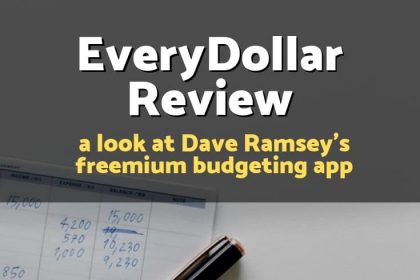To make Wealthtender free for readers, we earn money from advertisers, including financial professionals and firms that pay to be featured. This creates a conflict of interest when we favor their promotion over others. Read our editorial policy and terms of service to learn more. Wealthtender is not a client of these financial services providers.



[Navigating the equity markets’ confusing environment of increasing Volatility, Uncertainty, Complexity, and Ambiguity is immensely challenging for investment managers. There is also a growing importance in recognizing how the cross-industry, business operating environment is increasingly being driven by accelerating rates of change. The consequences of a complex hyper-changing environment on the markets are accelerating price trends in both directions and leading to a reassessment of fundamentals. There are enhanced forces at play leading to a need to challenge investment assumptions and research capabilities.
These persistent influences are changing the dynamics of the market creating dangerous unnoticed undercurrents and violently shifting rising and crashing waves of activity on price trends that may need more precise research to quickly capture and validate. The performance of a portfolio can be looked at from the perspective of the sum total of the price trends of all its positions.
Unfortunately, it has been made clear that many conventional risk management and analytical tools exposed some of their limitations during 2022’s treacherous markets. It begs the question of whether new research tools are needed to help advisors and asset managers better monitor and gauge the ongoing effects of these intensifying short-to-midterm forces at work and how investment fundamentals are reacting to this fluctuating environment. A proposition has been made that managing portfolio risks and maximizing performance is difficult without the ability to incorporate analytics specifically designed to discriminate and validate actual price trends and on the core investment assumptions of the underlying stock positions as a risk check.
To address this question further, we reached out to Institute Founding member Rocco Pellegrinelli, CEO of Trendrating – a Swiss-based company providing advanced alpha discovery and price trend analytic research solutions. Acting as a performance management partner for investment managers, he specifically designed his Trendrating research platform with modern AI technology and market intelligence capabilities that, in a few clicks, can be quickly added as an overlay to investment manager’s current investment processes to help them beat benchmarks and passive fund performance on an ongoing basis.
We asked him questions to better understand why he feels that investment managers should consider adding new modern research tools to help them test, explore combinations, and optimize the fundamental factors they focus on and also keep a steely eye on the rapidly shifting momentum of price trends.]
Hortz: What do you see as the challenges facing active managers in today’s market?
Pellegrinelli: Markets are more complex than in the past and price trend dynamics are many. A multitude of factors can make or break a trend. Beyond the fundamental picture, stocks are impacted by sentiment, social media, momentum players, algo trading, macro factors, and the shifting flows from the big money, like sovereign funds, creating or derailing trends. The ability to be able to accurately spot and validate price trends becomes more essential for finding best new opportunities, targeting entry points, and protecting against large drawdowns.
The changing dynamics of the market and business environment also challenge managers’ investment assumptions and research methodologies. Professional investment management has always been challenged to validate and rank investment ideas, develop rule-based risk management, and design, test, and execute advanced investment strategies in their portfolio management and optimization efforts. Only a disciplined, objective, and ongoing assessment of the true performance of the investment rules can expose any drawbacks and trigger the necessary adjustments.
Part of the problem for active managers can be the result of a lack of better information and excessive faith on hypotheses and assumptions. New advanced analytics and sophisticated models aided by modern technology can help to better inform investment decision makers. Those investors that expand their “intelligence arsenal” by adding the right new tools will be better equipped to deliver alpha on a more consistent basis.
Those that reject innovation and remain hostage of old school, traditional analysis and metrics, risk chronic underperformance as measured by the annual SPIVA report on active versus passive rankings that chronicle how many managers trail the benchmarks with impeccable consistency to the benefit of passive products. Fundamental analysis alone cannot capture this complexity. Advanced analytics and more effective tools are required to complement managers’ information frameworks and navigate the market.
Hortz: What are some of the specific opportunities and risks being created by this market?
Pellegrinelli: The great opportunity for active managers is based on the broad performance dispersion across stocks that is often underestimated and rarely exploited. Performance dispersion is a repetitive fact in every market cycle, and I firmly believe it offers the way to finally deliver ongoing superior performance for active managers.
Take the last 6 months where the SP500 was up +14% but, upon deeper inspection, revealed that the top 25% performers in the index averaged a +44% return while the bottom 25% averaged a -12% return.
The ability to discriminate between these winners and losers can have a big impact on returns. Investors who can maximize the portfolio exposure to stocks in the top 25% while limiting the positions across the bottom 25% can easily outperform the relevant benchmark. A smarter information framework supported by modern research tools like Trendrating can better support exploiting the performance dispersion across stocks.
The risk is remaining out of synch with these actual price developments and missing the opportunity to exploit the dispersion which we can observe in a large cross-section of mutual funds and ETFs.
Hortz: For investment managers reviewing their current research and analytics tools, what should an added investment research tool be doing for you? What tools can help most?
Pellegrinelli: Modern research tools should go beyond just the data. Many of our clients have Bloomberg, which is one of the best investment information platforms with plenty of data and analytics, but they add our research platform because of our different scope and rapid analysis capabilities.
Trendrating was built as an alpha generating system with ready-to-use functionality that contributes to risk control and performance improvement in a “measurable” way. Our unique trend rating model and the ability to control portfolio risks, along with our built-in functionality to help managers build, strengthen or “course correct” investment strategies by continually testing and recombining fundamental rules to maximize performance, make Trendrating a strategic research solution delivering immediate actionable value and insights well beyond traditional information systems.
Hortz: How can you determine if it actually works in helping your performance? How can you gauge if it is adding something to your business and investment process?
Pellegrinelli: The best way to determine the value of any new research tool is to work with it and test the platform for yourself to see what the net benefits are for your investment process and performance results. We offer free trials so investors can easily access valuable insights in their particular investment universe, build or refine their own strategies, and test and track them in real time. That is an easy and effective way to directly assess and evaluate the value that can be extracted from new investment tools.
Hortz: How do you address the question of cost in reviewing or adding investment support tools and analytics?
Pellegrinelli: Today still many managers spend good money on research, data, and tools whose contribution to alpha is questionable and often unproven due to a lack of testing opportunities. With Trendrating our clients can get a measurable, fully visible, positive impact on the performance and we affirm that the value we deliver is trackable in our system .
It is important to consider the potential impact to your investment business and process in terms of improved performance and more effective risk management. A manager can see relevant returns in terms of increased fees, client retention, client acquisition, time saving, and even cost saving as you can easily terminate other services of little relative value in comparison to your new enhanced research capabilities. Then you can see that the cost is a small fraction of the measurable benefits you can get.
Hortz: How do you respond to the concerns and objections of new tools adding more time or complexity to their investment process and potentially conflicting with their current strategies?
Pellegrinelli: Those concerns can be addressed in the technology and design of the research tools. Our analytics, as an example, were specifically designed to be a great complement to other fundamental, qualitative, or quantitative criteria. Let’s say we have customers that are value-oriented. They use their fundamental metrics to end up with a list of selected securities. But across this list there will be a wide dispersion of winners and losers in a 6-to-12 months time horizon.
Therefore, they overlay our rating of trends to either narrow down the selection or to adjust the allocation overweighting the stocks with a positive trend rating, as they satisfy metrics of good value AND good price trend support, or they allow more time to purchase a good value stock with a negative trend rating. Trendrating enables getting the best out of fundamental strategies via a better synchronization with real price trends.
Our methodology is designed to easily fit to most investment strategies and styles by offering an additional, unbiased risk and quality ranking. As to the adding of more research time to their process, our research tools and analytics were structured to save massive amounts of research time in the way we compiled and organized market and fundamentals data. Research tests and results are accessible in a few clicks, saving tons of time over traditionally inefficient research accessed over multiple screens and data sources that need to be compiled and analyzed.
Hortz: Can you share your thoughts on how investment managers can adjust their mindset to use new investment analytics tools like Trendrating?
Pellegrinelli: It is important to emphasize that the use of our research platform is applicable to any investment style or methodology and does not entail an abandonment of your proprietary investment process. You are strategically adding an advanced trend analytics and alpha discovery overlay process to help address the growing complexity of the markets and enhancing your research and technology to keep up with the competitive pressures of the investment and asset management industry.
You owe it to yourself, your investment process, and your clients to continuously try and test new investment research and tech tools. Added to that, Trendrating – as a performance management partner for investment managers – will offer extended free trials to demonstrate and prove with facts how our platform can enhance risk management and improve investment performance.
This article was originally published here and is republished on Wealthtender with permission.
About the Author

Bill Hortz
Founder Institute for Innovation Development
Bill Hortz is an independent business consultant and Founder/Dean of the Institute for Innovation Development- a financial services business innovation platform and network. With over 30 years of experience in the financial services industry including expertise in sales/marketing/branding of asset management firms, as well as, creatively restructuring and developing internal/external sales and strategic account departments for 5 major financial firms, including OppenheimerFunds, Neuberger&Berman and Templeton Funds Distributors. His wide ranging experiences have led Bill to a strong belief, passion and advocation for strategic thinking, innovation creation and strategic account management as the nexus of business skills needed to address a business environment challenged by an accelerating rate of change.







